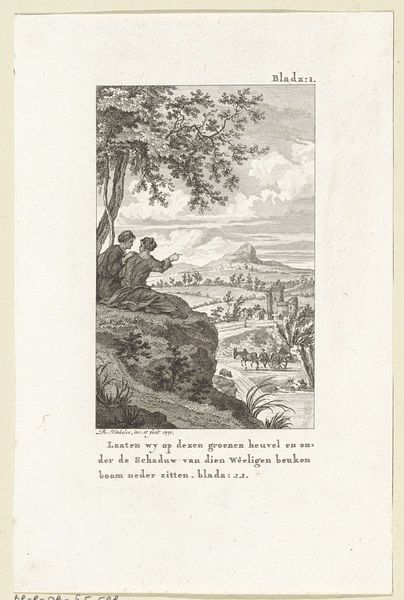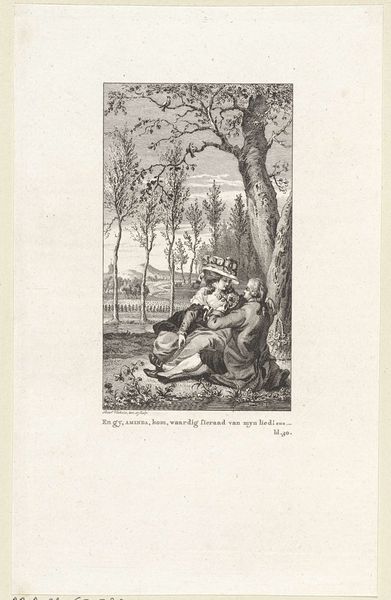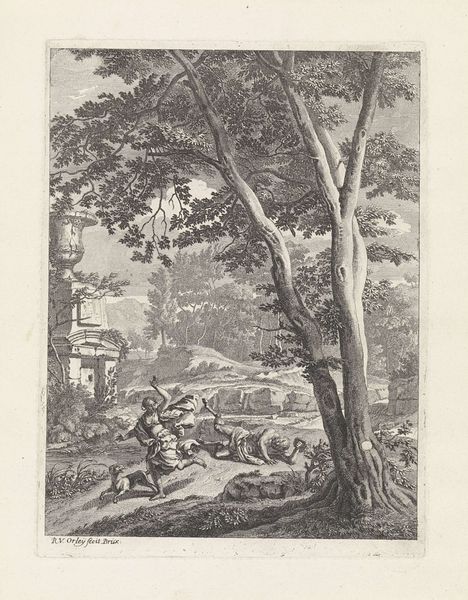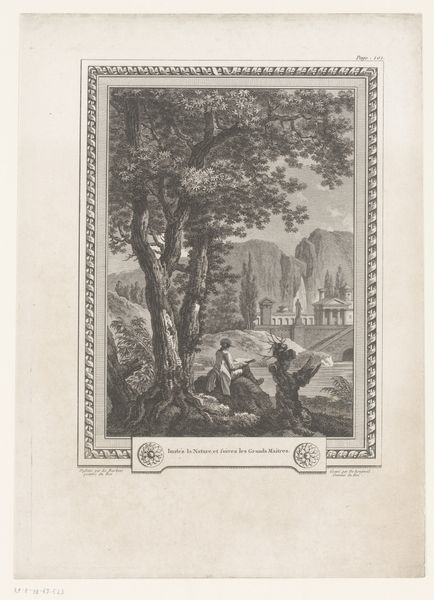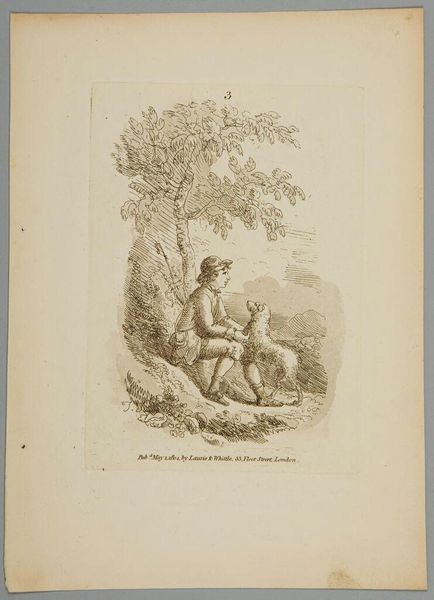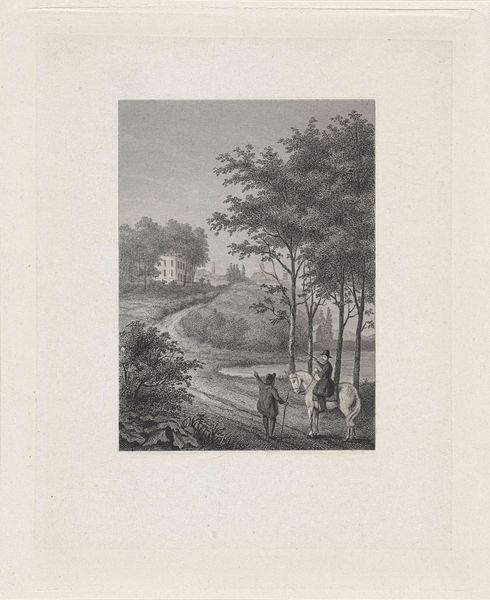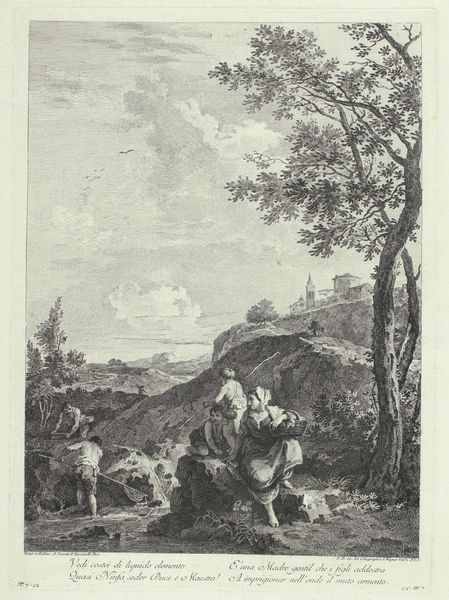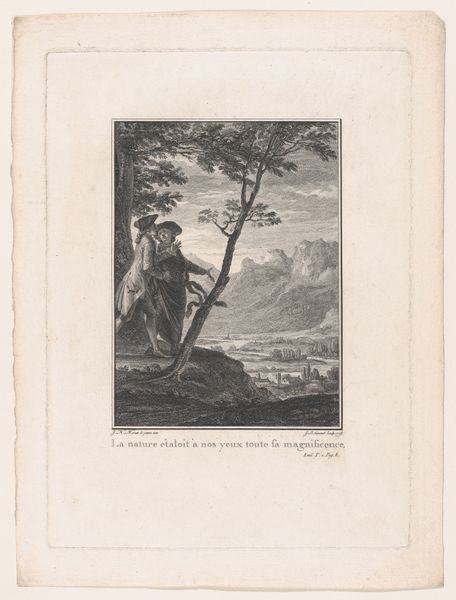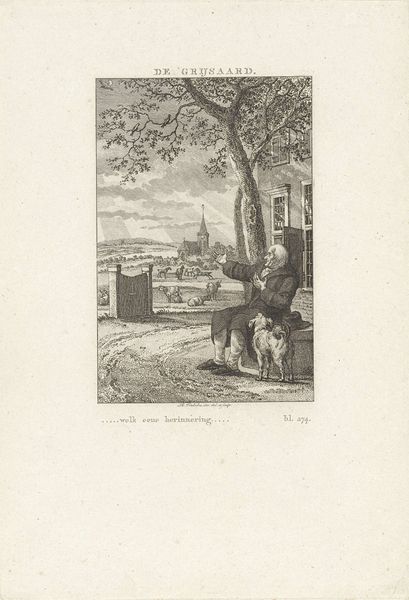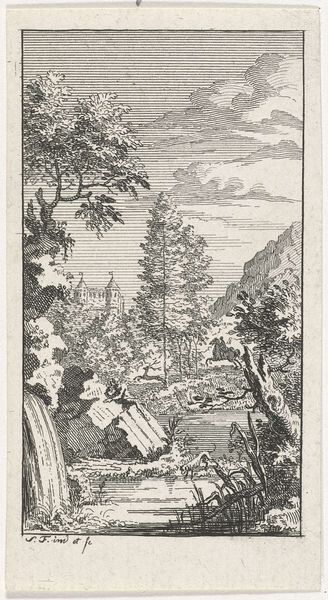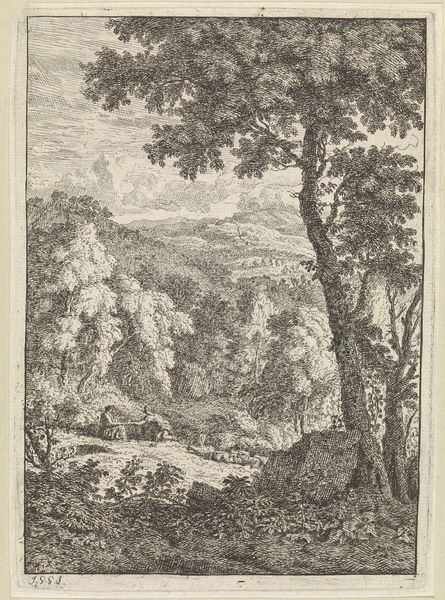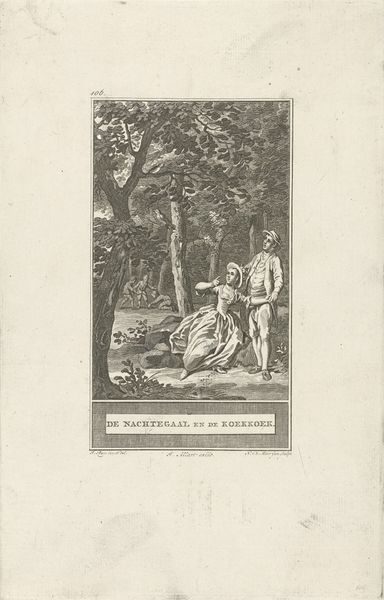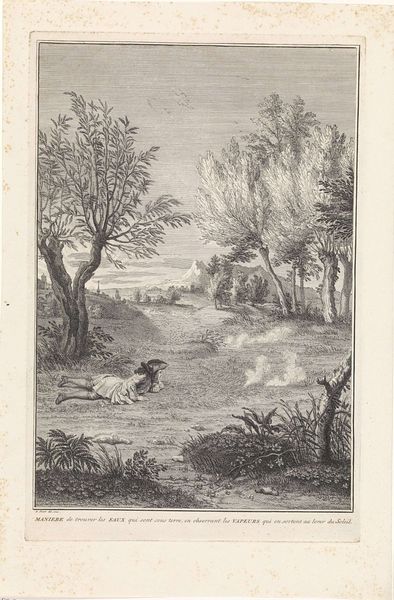
Reinhart ziet hoe een groep tot slaaf gemaakte mensen naar hun onderkomens wordt gedreven 1791 - 1798
0:00
0:00
reiniervinkeles
Rijksmuseum
print, engraving
#
dutch-golden-age
# print
#
old engraving style
#
landscape
#
figuration
#
line
#
genre-painting
#
engraving
Dimensions: height 234 mm, width 156 mm
Copyright: Rijks Museum: Open Domain
Curator: Welcome! We’re standing before a work entitled "Reinhart ziet hoe een groep tot slaaf gemaakte mensen naar hun onderkomens wordt gedreven," or "Reinhart Sees a Group of Enslaved People Driven to Their Dwellings," by Reinier Vinkeles, made sometime between 1791 and 1798. It’s an engraving. Editor: Well, isn’t that just picturesque despair? The man seems utterly oblivious to, or perhaps just accepting of, the situation. I am interested, if I am honest, by the way the scene is being framed. There is such a picturesque aesthetic, a classic colonial scene – that then clashes with this horrible realisation about what you’re seeing, front and centre, a dark colonial secret. Curator: Indeed. Vinkeles was known for his detailed line work, very typical of the Dutch Golden Age, and he captures that serene landscape aesthetic that’s common in depictions of that time. Yet the inscription translates to "and I was quiet and content; yet in the distance I hear the whip of the overseer." Editor: Oh, how ironic, that’s really making the painting sink to new levels. He's finding peace precisely BECAUSE he is suppressing all the injustice and cruelty he knows if all around him. The composition is almost designed to induce cognitive dissonance, it seems almost deliberate. The dog at his feet seems more aware of the tragedy than he does. What do you make of that? Curator: Animals are often symbolic, signifying instinct and moral compasses in art. Here, the dog perhaps acts as a counterpoint to the man's detachment. What's fascinating is how Vinkeles uses familiar visual language—landscape, genre scenes—to discuss a morally complex situation. It mirrors how societal structures normalize atrocities by wrapping them in comforting routines. Editor: Exactly! The familiar veneer makes the horror all the more biting. This really stays with you after viewing. I am going to need a shot of something, just to rid myself of this picture… But wow, this engraving, wow. Curator: Indeed, the banality of evil, as it were, is effectively rendered. I see here how art has the potent capacity to unveil painful truths hiding within the ordinary. Editor: It also showcases that terrible comfort with the everyday atrocities perpetrated on other humans... Thanks to the Rijksmuseum for the lesson, however horrifying...
Comments
No comments
Be the first to comment and join the conversation on the ultimate creative platform.
